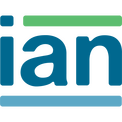Watershed report cards are powerful tools used around the world to describe ecosystem status, increase public awareness, and inform and influence decision makers to act to improve the health of a watershed. This is the first Huron River Report Card, which assesses the condition of the river itself as well as the surrounding watershed. The results of this report card reflect the progress that has been made in improving a heavily urbanized watershed. The development of a watershed report card is collaborative. Stakeholders from a variety of backgrounds—scientists, researchers, government officials, business owners, and interested residents—collaborate to define what is valuable about an ecosystem and what threatens that value. The resulting report cards are “socioenvironmental” because they contain more than just environmental concerns. A river’s health is about more than its water quality and fish population; rivers have recreational and economic value to the people who live in their watersheds.
This report card is a timely, transparent assessment of the Huron River and its watershed, which is the traditional lands of the Ottawa, Chippewa, Potowatomi, and Wyandot peoples. This document was produced by the Huron River Watershed Council and the University of Maryland Center for Environmental Science. Funding was provided by the Fred A. and Barbara M. Erb Family Foundation. Council Fire, LLC was integral to developing economic indicators and consulted on economic data analysis. Over 100 stakeholders contributed to this project. All photos courtesy of the Huron River Watershed Council unless otherwise specified. For more information on the Huron River Watershed Council, visit hrwc.org.
Data sources include: Centers for Disease Control and Prevention/Agency for Toxic Substances and Disease Registry; Detroit Bird Alliance/Audubon Society; Federal Emergency Management Agency; Friends of the Detroit River; Google Earth Engine; Huron River Watershed Council; Implan; Michigan Department of Environment, Great Lakes, and Energy; Michigan Department of Health and Human Services; Michigan Department of Natural Resources; Multi-Resolution Land Characteristics Consortium; National Oceanic and Atmospheric Administration; National Water Quality Monitoring Council; Trust for Public Land; U.S. Census Bureau; U.S. Environmental Protection Agency; U.S. Geological Survey; and Your Economy. To find more information about the data and analyses used, please refer to the methods report.
About the Huron River Watershed Council
Founded in 1965, the Huron River Watershed Council (HRWC) is southeast Michigan’s oldest environmental organization dedicated to river protection. The Huron River Watershed Council protects and restores the river for healthy and vibrant communities.
HRWC is a nonprofit coalition of residents, businesses, and local governments. HRWC bridges political boundaries by building partnerships between and among communities, community leaders, residents, and commercial enterprises. HRWC monitors the Huron River, its tributaries, lakes, and groundwater, and leads programs on pollution prevention and abatement, wetland and floodplain protection, public education, and natural resource and land-use planning.
Since we were formed, the HRWC has served as a place where local units of government and citizens have discussed problems and sought solutions to critical issues affecting the River. Even though the HRWC has no enforcement powers, we have accomplished our goals through the use of technical data, factual information, and citizen stewardship to influence decisions made by various local and state agencies.
Integration and Application Network


